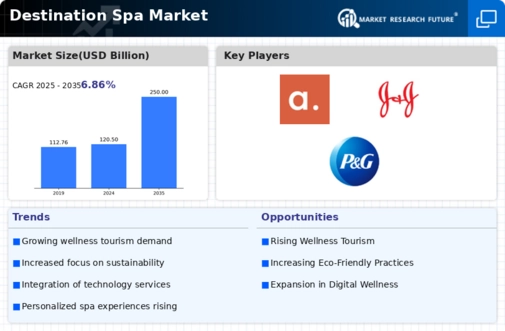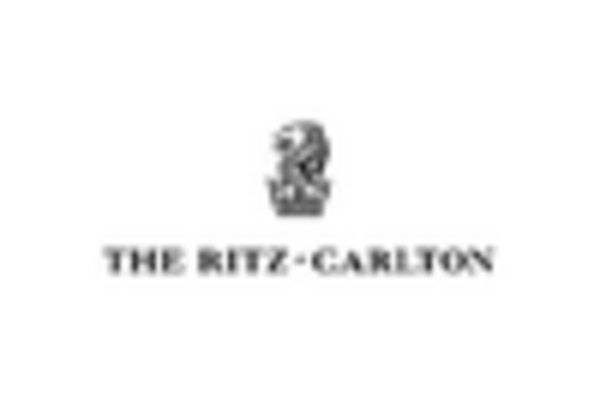Increasing Health Consciousness
The Destination Spa Market is experiencing a notable surge in demand due to the increasing health consciousness among consumers. As individuals become more aware of the importance of physical and mental well-being, they are seeking holistic experiences that promote relaxation and rejuvenation. This trend is reflected in the growing number of wellness retreats and spa facilities that cater to health-oriented clientele. According to recent data, the wellness tourism sector, which encompasses destination spas, is projected to reach a valuation of over 1 trillion dollars by 2025. This indicates a robust growth trajectory for the Destination Spa Market, as more travelers prioritize health and wellness in their travel plans.
Rise of Personalized Experiences
In the Destination Spa Market, there is a marked shift towards personalized experiences that cater to individual preferences and needs. Consumers are increasingly seeking tailored wellness programs that address specific health concerns, such as stress management, weight loss, or skin rejuvenation. This trend is supported by advancements in technology, which allow spas to offer customized treatments based on client assessments. The ability to provide personalized services not only enhances customer satisfaction but also fosters loyalty, as clients are more likely to return to spas that meet their unique requirements. As a result, the Destination Spa Market is likely to see a rise in establishments that focus on bespoke wellness experiences.
Integration of Holistic Therapies
The Destination Spa Market is increasingly integrating holistic therapies into their offerings, reflecting a broader trend towards comprehensive wellness. Holistic approaches, which encompass physical, emotional, and spiritual well-being, are gaining traction among consumers seeking more than just traditional spa treatments. This integration includes practices such as yoga, meditation, and alternative therapies, which appeal to a diverse clientele. As awareness of holistic health continues to rise, destination spas that incorporate these therapies are likely to differentiate themselves in a competitive market. The growing interest in holistic wellness is expected to drive the Destination Spa Market forward, as more individuals seek transformative experiences that address their overall well-being.
Expansion of Eco-Friendly Practices
Sustainability has become a pivotal focus within the Destination Spa Market, as consumers increasingly prefer eco-friendly practices. Spas that implement sustainable initiatives, such as using organic products, reducing waste, and conserving energy, are likely to attract environmentally conscious clientele. This shift towards sustainability is not merely a trend but a fundamental change in consumer behavior, as many travelers now prioritize eco-friendly accommodations and services. Data suggests that the wellness tourism market, which includes destination spas, is witnessing a growing demand for sustainable practices, with a significant percentage of travelers willing to pay more for eco-friendly options. This indicates a promising future for spas that embrace sustainability.
Influence of Social Media and Digital Marketing
The Destination Spa Market is significantly influenced by social media and digital marketing strategies. As consumers increasingly rely on online platforms for travel inspiration and recommendations, spas that effectively utilize social media can enhance their visibility and attract a broader audience. Engaging content, such as wellness tips, client testimonials, and visually appealing imagery, can create a strong online presence that resonates with potential clients. Furthermore, data indicates that a substantial portion of travelers consult social media before making travel decisions, underscoring the importance of digital marketing in the Destination Spa Market. This trend suggests that spas must adapt to the evolving digital landscape to remain competitive and relevant.


















Leave a Comment